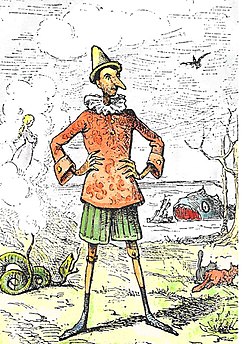
Back أدب أطفال Arabic শিশু সাহিত্য Assamese Lliteratura infantil AST Uşaq ədəbiyyatı Azerbaijani Балалар әҙәбиәте Bashkir Дзіцячая літаратура Byelorussian Детска литература Bulgarian শিশুসাহিত্য Bengali/Bangla Dječija književnost BS Literatura infantil Catalan


Children's literature or juvenile literature includes stories, books, magazines, and poems that are created for children. In additon to conventional literary genres, modern children's literature is classified by the intended age of the reader, ranging from picture books for the very young to young adult fiction for those nearing maturity.
Children's literature can be traced to traditional stories like fairy tales, which have only been identified as children's literature since the eighteenth century, and songs, part of a wider oral tradition, which adults shared with children before publishing existed. The development of early children's literature, before printing was invented, is difficult to trace. Even after printing became widespread, many classic "children's" tales were originally created for adults and later adapted for a younger audience. Since the fifteenth century much literature has been aimed specifically at children, often with a moral or religious message. Children's literature has been shaped by religious sources, like Puritan traditions, or by more philosophical and scientific standpoints with the influences of Charles Darwin and John Locke.[2] The late nineteenth and early twentieth centuries are known as the "Golden Age of Children's Literature" because many classic children's books were published then.
- ^ ...remains the most translated Italian book and, after the Bible, the most widely read... by Francelia Butler, Children's Literature, Yale University Press, 1972.
- ^ Lerer, Seth (15 June 2008). Children's Literature: A Reader's History, from Aesop to Harry Potter. Chicago: University of Chicago Press. ISBN 978-0-226-47300-0. OCLC 176980408.